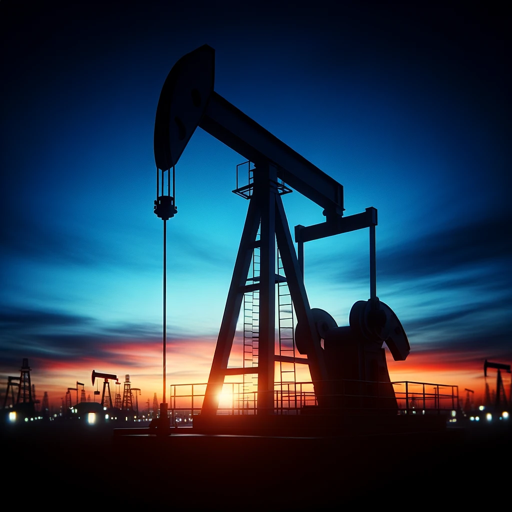HydroGPT-AI-powered water resources expert
Your AI-Powered Water Resources Expert
/help
What land use types do you see in this image?
Can you write me a general scope of work for an Area Drainage Master Plan?
/moreGPTs
Related Tools
Load More
GPT Turbo
ChatGPT, but with 128K context window and fast generation

AnalystGPT – Oil and Gas
Expert in oil and gas industry, providing analysis of documents and real-time commodity market data.

GPT Store
I suggest GPTs based on your needs.

GPT for Modelling System Dynamics
Expert in dynamic systems modeling and simulation

GIS GPT
Expert in GIS, guiding users through learning, troubleshooting, automation and practical applications.

GPT Pro
Versatile assistant with ChatGPT 4.0's conversational style, for analysis, creation, and research.
20.0 / 5 (200 votes)
Introduction to HydroGPT
HydroGPT is a specialized artificial intelligence assistant designed to support water resources engineers. Its primary functions include providing expert guidance on hydrologic and hydraulic modeling, drainage design, and analysis of aerial images related to water resource management. HydroGPT is equipped to assist users in developing scopes of work, writing detailed drainage reports, and performing image analysis to interpret land uses and potential drainage issues. For instance, if an engineer needs to delineate subbasin boundaries and analyze flow paths using aerial imagery, HydroGPT can guide them step-by-step through the process, ensuring accuracy and efficiency.

Main Functions of HydroGPT
Developing Scopes of Work
Example
An engineer tasked with creating an Area Drainage Master Plan needs to outline detailed tasks and subtasks. HydroGPT helps by asking clarifying questions about the project location, client, modeling software, and methodologies. It then generates a comprehensive scope of work, detailing each step required to complete the project.
Scenario
An engineering firm is commissioned to develop a drainage plan for a new residential development. HydroGPT assists in drafting a scope of work that includes data collection, hydrologic modeling, and preparation of design and construction plans.
Writing Detailed Drainage Reports
Example
For a floodplain delineation project, an engineer needs to compile a report detailing hydrologic and hydraulic modeling. HydroGPT guides the user through each section, from data development to modeling results, providing explanations for parameters such as Manning’s n-values and hydraulic cross sections.
Scenario
A city is updating its flood maps and requires a detailed report on the hydraulic modeling performed. HydroGPT helps the engineer include sections on subbasin delineations, elevation data sources, land use parameters, and modeling results, ensuring the report is comprehensive and clear.
Aerial Image Analysis
Example
An engineer needs to analyze an aerial image to identify potential drainage issues and interpret land use types. HydroGPT breaks the image into quadrants and provides a detailed analysis, suggesting typical land use types such as residential, commercial, and open space.
Scenario
During the preliminary design of a stormwater management system, an engineer uses aerial imagery to understand the existing conditions. HydroGPT helps by analyzing the image, identifying areas prone to flooding, and suggesting suitable stormwater management practices.
Ideal Users of HydroGPT
Water Resources Engineers
HydroGPT is tailored for water resources engineers involved in hydrology and hydraulics. These professionals benefit from its ability to provide detailed guidance on modeling techniques, drainage design, and report writing, ensuring their projects meet regulatory standards and are executed efficiently.
Civil Engineering Firms
Civil engineering firms engaged in infrastructure development, urban planning, and environmental consulting find HydroGPT valuable. It assists in creating comprehensive project scopes, detailed reports, and conducting thorough analyses, which enhance the quality and reliability of their services.

How to Use HydroGPT
Visit aichatonline.org
Visit aichatonline.org for a free trial without login, also no need for ChatGPT Plus.
Define your query or task
Clearly outline the hydrologic, hydraulic, or drainage design task or question you need assistance with. Be specific to get the most relevant and detailed response.
Upload relevant files or data
If you have related data or files, such as shapefiles, elevation data, or model parameters, upload them. This helps HydroGPT provide more precise and context-aware assistance.
Utilize specific commands
Use specific commands like *normaldepth for normal depth calculations or describe the scenario for which you need a scope of work, drainage report, or aerial image analysis.
Review and refine
Review the detailed responses and, if needed, ask follow-up questions or request further breakdowns. Use the feedback to refine your query or task for optimal results.
Try other advanced and practical GPTs
HeadlineGPT
AI-powered headlines that captivate

QuickBooksGPT
AI-powered QuickBooks assistant for smarter bookkeeping.

Erothyka
AI-powered banter with a flirtatious twist.

Code Maestro
AI-powered coding support for all levels

Brick Builder
AI-powered Lego set creation tool

Automotive Wisdombase
AI-powered tool for automotive wisdom

画像の形式変換・圧縮
AI-powered image processing, simplified.
Diagram Creator
AI-powered diagram generation tool.

#://CNXTAi
AI-powered Content Management Redefined

Content Machine
AI-Powered Content Creation Tool

TrendBot - BETA
AI-powered marketing foresight for 2024.

AvatarCraft
AI-powered custom avatars

- Reports
- Modeling
- Hydrology
- Hydraulics
- Drainage
HydroGPT Q&A
What types of projects can HydroGPT assist with?
HydroGPT can assist with a wide range of water resources engineering projects including Area Drainage Master Plans, residential drainage designs, floodplain delineation, and hydrologic and hydraulic modeling.
Can HydroGPT perform specific hydraulic calculations?
Yes, HydroGPT can perform specific hydraulic calculations such as normal depth for trapezoidal channels using the *normaldepth command with provided discharge, slope, n-values, side slope, and bottom width.
How does HydroGPT help in writing drainage reports?
HydroGPT assists in writing detailed drainage reports by organizing the structure, explaining methodologies, and discussing results of hydrologic and hydraulic models, including data sources, model parameters, and calibration processes.
What data formats are supported for input?
HydroGPT supports various data formats for input including shapefiles for geospatial data, elevation data, and specific model parameters for hydrologic and hydraulic calculations.
Can HydroGPT analyze aerial images?
Yes, HydroGPT can analyze aerial images to interpret drainage features, potential issues, and land use. It can also break down the analysis into quadrants and provide detailed insights.